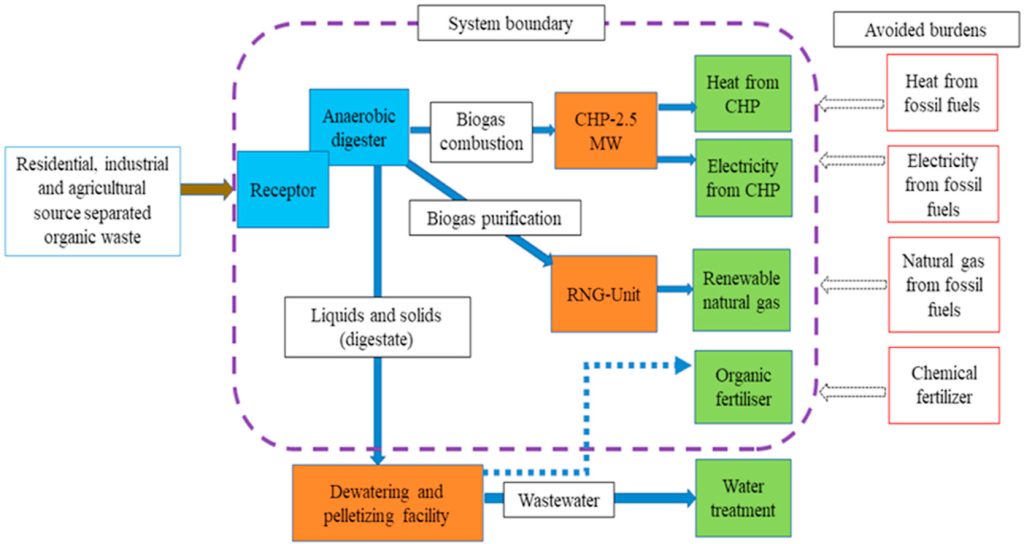Azura Associates is pleased to share our contributions to a paper that was published in Volume 11 of the Environmental and Sustainability Indicators journal. Environmental and Sustainability Indicators, a companion title to the highly-respected Ecological Indicators, is an open access journal promoting research on indicators as drivers for environmental management, policy formulation, and interdisciplinary research assessing complex environmental interactions for stimulating sustainable development. The paper entitled “Biogas from source separated organic waste within a circular and life cycle perspective. A case study in Ontario, Canada” was co-authored by Amos Ncube, Jonathan Cocker, Gabriella Fiorentino, and Azura’s David Ellis.
Key Highlights
- The environmental load of an Anaerobic Digestion (AD) facility in Ontario, has been evaluated.
- Biogas co-generation has a lower environmental burden compared to its upgrade into biomethane.
- Biobased products showed better environmental performance than their fossil-derived counterparts.
- The appropriate valorisation of biogas offers environmental and economic opportunities.
Abstract
The appropriate transformation and valorisation of biogas offers environmental and economic opportunities in a future with restrictions upon fossil-based fuels and materials. The Life Cycle Assessment (LCA) method was used to quantify and compare the potential environmental impacts of an AD plant incorporating biogas co-generation and upgrading options, namely anaerobic digestion with combined heat and power generation (AD-CHP) and anaerobic digestion with biogas upgrading to renewable natural gas (AD-RNG).
Using an average Anaerobic Digestion facility in Ontario, Canada, modelled after real facilities, as a case study, electricity and steel were identified as potential hotspot input materials carrying a disproportionate environmental burden for biogas production. With a system expansion approach, the biogas was subsequently utilized to produce (1) both heat and electricity using CHP system, or (2) upgraded to RNG (also called biomethane) through chemical amine scrubbing. Membrane or other biogas upgrading options were not fully evaluated within the scope of this study.
In comparing the biogas co-generation and upgrading options, the AD-CHP alternative resulted in a lesser environmental load, two times lower when compared to the AD-RNG biomethane recovery option. Furthermore, the avoided burden of producing fossil-based electricity, natural gas, and chemical fertilizer was analyzed and compared against their renewable counterparts. Significant reductions in emissions and in the depletion of fossil fuels were achieved, thus confirming the positive efforts of diverting organic waste from landfills to reduce organic waste disposal impacts and improve the management of organic waste.
The analysis has provided useful insights to bioenergy project developers, policy makers, and the scientific community regarding the processing of source separated organic waste, biogas production, and its upgrading alternatives in a circular economy perspective.
Future work is planned to evaluate additional biogas upgrading options within an LCA framework to work towards a more comprehensive understanding of the environmental implications of anaerobic digestion to manage source separated organics.
To read the full paper, please visit the Science Direct website.
Get Insights from the Bioprocess Experts Right to Your inbox
Sign up to the Discover Digesters Newsletter to access Azura’s best practices, field-tested advice, and insights into the anaerobic digestion & industrial wastewater treatment industries.
By submitting this form, you are consenting to receive marketing emails from: Azura Associates. You can revoke your consent to receive emails at any time by using the SafeUnsubscribe® link, found at the bottom of every email. Emails are serviced by Constant Contact.

